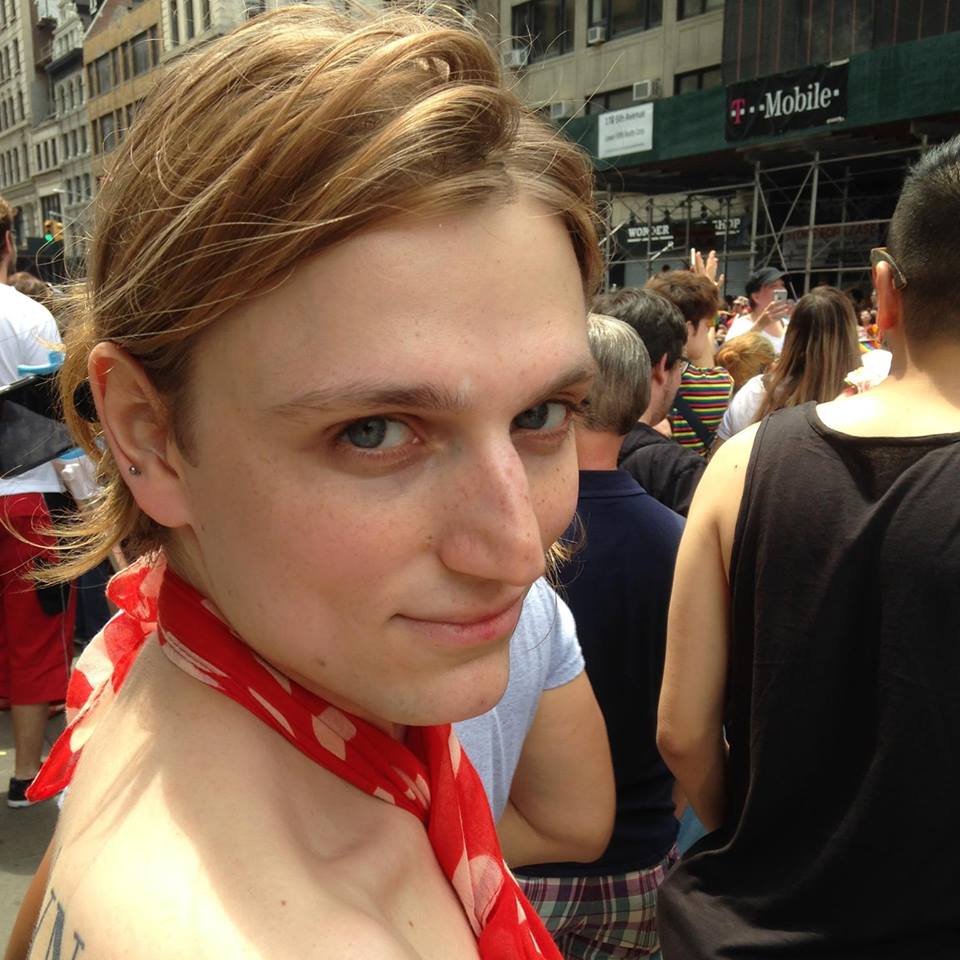ISSN: 1941-4137
POETRY THAT ENACTS THE ARTISTIC AND CREATIVE PURITY OF GLASS
POETRY THAT ENACTS THE ARTISTIC AND CREATIVE PURITY OF GLASS

Valentine Conaty is a Birmingham-grown artist and editor based in Queens. She founded Bomb Cyclone, a journal of ecopoetics, and assists poets, presses, and literary organizations in planning events at Poets House, among the nation’s largest public poetry libraries. Work may be found in (b)OINK, Anomaly, and the Operating System’s Ex-Spec Po series — and elsewhere, under various former aliases. Her interests include popular music, contemporary sculpture and installation arts, and built environments of the American South.
Poets Resist
Edited by Sarah Clark
December 12, 2018
Edited by Sarah Clark
December 12, 2018
“Blooms in smothering but sometimes” … a study in blood
Weekend protests stir Sarasota, Manatee counties as bloodflows elbow ashore.
The fouling recurrence/ redness curdles, retreading an oft-repeated frisson — the abject surf, a rust-colored surface hemorrhage — already clotting the dunes, coating the throat. “Thousands of dead tarpons, manatees, sea turtles, floating offshore and onto beaches … has happened before.” After taxing intake of fertile real estate, the guiltless, fetid tide exhales, hot with capital.
Lacking, still, “statistically provable data,” South Florida’s scabbed coast/ locals suggest “if you fertilize something, it grows.”
“In brackish water/ born,” the large tarpon lurches over a wave’s break — silver vanitas, a wake from our dreams. “Have clouded over, beginning to bloat,” salt coaxes blood/ water. Protestors say water as a statement of necessity: “not just economically, but visually, aesthetically” the watershed, represented by this still-guide, flushes/ infuses with data.
“State wildlife officials have tallied 605 dead/ 120 sick sea turtles in seven counties with or near. 266 confirmed poisonings since November, Mote Marine Lab reports. The National Oceanic and Atmospheric Administration confirms 22 dolphin deaths, including 11 collected last week in Sarasota/ Manatee counties alone. Nearly 100 manatee deaths in counties where red occurred have also been connected to blooms. Impacts to lower-profile species with fewer protections remain unknown until future stock assessments can be performed.”
“Now being hoisted into flatbeds/ hauled off for necropsies,” …
Once source, that plentiful liminal plane onto which human emotion, inquiry, imagination were projected/ “now it’s like the moon’s face out there. Night and day.” Tide, that fertile non-state into which states diffuse — soil slips into surf slips into vapor — elicits an ecology of surface/ revision. After generations, contemplative tourism, mapping the affective poetics of the infinite/ wealth of water, “has exacerbated an expanse … now extending along the coast.”
Single-celled algae multiply/ accumulating affect. Off this same coast, bioluminescence ignites/ impact, mapping in neon the gestures of our celestial bodies across the sandbar. After autumn fronts deposit blooms nearer shore, tide unfurls with moonlight’s batting eye.
Mullet pile along Beer Can Island’s thin peninsula, aluminum-scaled/ putrefying beside vegetal debris expelled from “lingering red.” As dawn heaves, purple flies multiple as birdshot graze upon the night’s festering catch. Surplus bleaches on the strip, leavings of mass production/ a narrative without causation (natural, recursive): “as their nutrients are released into the water, tide becomes self-sufficient.”
Two flatbeds — their parallel tracks, dynamic sequences as of birds in mid-flight — score the sand where rescue/ resuscitation efforts continue from the night before. Paper masks and long rubber gloves comb ferrous dunes and estuaries, tugging bodies from the hungry surf’s clutch. In among thousands of mullet/ occasional preened redfish or snook, first responders lie dead; gulls bloat wingspans from their last meal. “Massive flooding/ temperatures” staged the iridescence of their last stuttering movements, hastening into a dance “attacking every one of the five senses.”
The state, “having recorded incidents of red” dating as far back as first colonization, absolves itself of the salt of culpability, gutting funding for ongoing research/ water management. Instead, “bailing out failing restaurants, fishing boats,” … “attempts to address threats” to Florida’s industries.
From “spray of toxic surf, causing respiratory irritation in back of throat”/ retrogression to that first contagion of heel on uncharted land, the state retains strategic distance. Atrophy stirs blood from bloom until it coagulates/ in esophagus, coating lungs after prolonged exposure. At peak season on Lido Key, lifeguards don gas masks/ hazmat suits to guide listless tourists off-sand.
“High nutrient levels near the coast to multiply” headlines tease/ disturbing an implicit surface: “too much upwelling/ can impede bloom.”
“‘Blooms in smothering but sometimes’ … a study in blood” borrows text from several dozen articles concerning the ongoing red tide outbreak affecting much of Florida’s West Coast, including articles from the Miami Herald Tribune, the Seattle Times, and — prominently — the Sarasota Herald Tribune.
Poets Resist is published by Glass Poetry Press.
All contents © the author.
All contents © the author.





